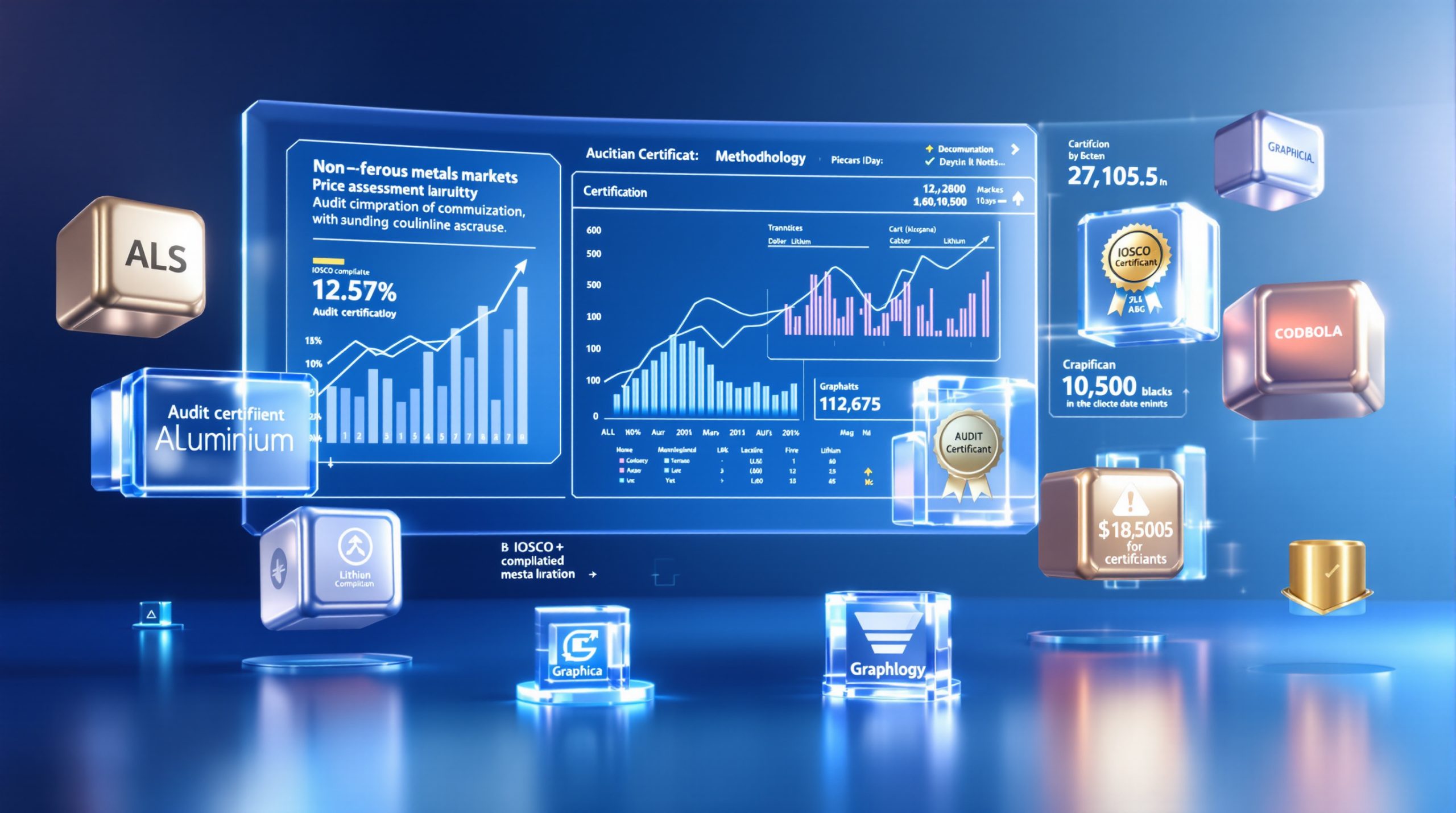Understanding the Copper Market Divide: Bulls vs. Bears in 2025
The copper market in 2025 has become a battleground of opposing viewpoints, with analysts, traders, and industry experts deeply divided on future price directions. This fundamental disagreement stems from differing interpretations of supply-demand dynamics, inventory levels, and global economic factors influencing the industrial metal.
Key Factors Creating Market Polarization
-
Conflicting interpretations of mine disruptions
-
Disagreement on actual inventory levels and "hidden stocks"
-
Divergent views on demand strength, particularly in China
-
Different methodologies for calculating market balances
-
Varying perspectives on tariffs impact on copper
How Bullish Analysts View the Copper Market
Supply Disruption Driving Price Momentum
Copper bulls point to significant production losses at major mines as a primary catalyst for higher prices. The recent mud-flow disaster at Grasberg in Indonesia—the world's second-largest copper mine—has removed substantial supply from the market for over a month. Combined with ongoing disruptions in Chile and Congo, these supply shocks have created what bulls see as a fundamental tightening.
Projected Market Deficits Supporting Higher Prices
Bank of America analyst Michael Widmer forecasts a substantial market deficit of 350,000 tons for 2026, leading to aggressive price targets:
| Year | Projected Average Price (per ton) |
|---|---|
| 2026 | $11,313 |
| 2027 | $13,500 |
Citi analysts have joined the bullish chorus, predicting copper will reach $12,000 per ton within three months, driven by persistent supply constraints and rising copper demand.
Long-Term Structural Factors Favoring Higher Prices
Bulls emphasize several structural factors supporting their positive outlook:
-
Declining ore grades at existing mines
-
Limited pipeline of new major projects
-
Growing demand from energy transition technologies
-
Increasing production costs due to environmental regulations
-
Strategic importance in global decarbonization efforts
Why Bears Remain Skeptical About Copper's Rally
Market Surplus Calculations Challenge Bull Narrative
Contrasting with bullish deficit projections, consultant Ken Hoffman of Traubenbach presented a dramatically different view at the London Metal Exchange Seminar:
| Year | Market Balance (tons) |
|---|---|
| 2025 | -60,000 (deficit) |
| 2026 | +126,000 (surplus) |
"I actually will disagree with probably every single analyst in this room," Hoffman stated, highlighting the extreme divide in market interpretation.
Hidden Inventory Concerns
Macquarie analyst Alice Fox identifies a critical factor often overlooked in market calculations—the massive shift of approximately 600,000 tons of copper to the United States ahead of tariff implementation:
-
200,000 tons entered Comex exchange warehouses
-
400,000 tons moved into private storage
"What people are doing is ignoring basically that 400,000 tons," Fox explained, suggesting these supplies represent "shadow inventory" not reflected in many market balance calculations.
Limited Physical Market Tightness
Bears point to the disconnect between futures market pricing and physical market conditions:
-
No widespread physical supply shortages outside Europe
-
Growing inventories in China during a season when stocks typically decline
-
Premiums in most regions remaining at moderate levels
-
Industrial consumers showing price resistance at higher levels
How Are Tariffs Influencing the Copper Market Outlook?
Pre-Tariff Inventory Building
The anticipated implementation of tariffs has significantly distorted normal trade flows, with substantial inventory building occurring in the United States:
| Copper Flow | Volume (tons) |
|---|---|
| Total US inflow | 600,000 |
| Comex registered | 200,000 |
| Private storage | 400,000 |
This pre-tariff stockpiling has created what bears see as artificial tightness that will eventually unwind.
Long-Term Demand Destruction Concerns
Hoffman warned that tariffs could have far-reaching consequences: "2026 will be the year where we see the emperor has no clothes, and that all of a sudden this tariff impact will have an absolutely massive impact on the US consumer and copper demand in the US."
This perspective suggests that while tariffs may create short-term supply constraints, they could ultimately reduce overall demand—a bearish factor for prices.
What Role Is China Playing in the Copper Market Divide?
Demand Questions in the World's Largest Consumer
China, accounting for over half of global copper consumption, remains a critical factor in market projections. Bears highlight several concerning trends:
-
Seasonal inventory patterns showing abnormal accumulation
-
Manufacturing activity indicators showing mixed signals
-
Property sector continuing to struggle despite stimulus efforts
-
Export-oriented industries facing headwinds from global tariffs
Risk of Demand Destruction at Higher Prices
BNP Paribas analyst David Wilson cautioned that speculative buying rather than fundamental demand was driving recent price increases: "Funds can push an industrial metal up, but then the industrial consumers will just go, all right, we're not buying."
This suggests a price ceiling may exist where physical buying from China and other consumers dries up, creating a self-correcting mechanism for the market.
How Are Speculators Influencing Copper Price Movements?
Record Speculative Positioning
The futures market has seen substantial speculative activity influencing price movements:
-
Managed money positions reaching multi-year highs
-
Algorithmic trading amplifying price swings
-
Options market showing increased volatility
-
Spread trading between exchanges creating arbitrage opportunities
Disconnect Between Financial and Physical Markets
Bears argue that financial market positioning rather than physical market fundamentals is driving the recent price rally. This creates vulnerability to rapid position unwinding if sentiment shifts.
What Technical Indicators Are Shaping Copper Market Views?
Price Momentum and Resistance Levels
The copper market has demonstrated strong technical performance in 2025:
| Technical Milestone | Price Level | Date Achieved |
|---|---|---|
| Previous record high | $11,104.50 | May 2024 |
| Recent high | $11,000 | October 2025 |
| Year-to-date gain | 22% | – |
Bulls see the approach to previous record highs as confirmation of their positive outlook, while bears view these levels as potential resistance points where selling may intensify.
Volume and Open Interest Patterns
Trading patterns show divergent participation across different timeframes:
-
Near-term contracts showing higher volumes but mixed open interest
-
Longer-dated contracts reflecting more cautious positioning
-
Spread trading indicating uncertainty about timing of market tightness
How Are Mining Companies Responding to Market Uncertainty?
Production Hedging Strategies
The sharp divide between copper bulls and bears has influenced producer hedging decisions:
-
Some miners locking in current prices to protect against potential downside
-
Others remaining unhedged to capture upside if bull case materializes
-
Strategic stockpiling of concentrate by some integrated producers
-
Varying capital expenditure approaches based on price outlook
Investment Decision Implications
The uncertainty surrounding copper's medium-term outlook affects critical mining investment decisions:
-
Project development timelines being reassessed
-
Expansion decisions facing increased scrutiny
-
Exploration budgets showing divergent trends by company
-
M&A activity reflecting differing views on asset valuations
What Are the Implications for Investors and Market Participants?
Navigating Heightened Volatility
The stark division between bulls and bears creates a challenging environment for market participants:
-
Wider trading ranges expected to continue
-
Increased importance of technical analysis and positioning data
-
Greater focus on physical premium indicators as validation points
-
Heightened sensitivity to production disruption news
Indicators to Watch for Market Direction
Several key metrics may provide early signals of which camp—bulls or bears—will ultimately prove correct:
-
Chinese bonded warehouse inventory movements
-
Premium levels in key consumption regions
-
Mine production recovery timelines, especially at Grasberg
-
Exchange inventory trends across LME, Comex and SHFE
-
Physical buying activity at price dips
What's the Outlook for Copper Prices Through 2027?
Competing Price Forecasts
The divide between analysts is clearly reflected in their price projections:
| Analyst/Institution | 2026 Average Price Forecast | Market View |
|---|---|---|
| Bank of America | $11,313 | Bullish |
| Macquarie | $9,525 | Bearish |
| Citi | $12,000 (3-month target) | Bullish |
| Traubenbach | Not specified (bearish) | Bearish |
Consensus Emerging on Volatility
Despite disagreement on direction, most analysts agree that heightened price volatility will continue, with potential for sharp moves in either direction based on supply disruptions, demand indicators, or macroeconomic developments. Many investors are exploring various copper investment strategies to navigate this challenging market.
FAQ: Understanding the Copper Market Divide
Why has copper reached near-record prices despite bearish indicators?
Recent price strength reflects a combination of speculative positioning, supply disruptions at major mines including Grasberg, and pre-tariff inventory building. Bears argue these factors mask underlying weak fundamentals that will eventually reassert themselves.
How significant are the current mine disruptions to global supply?
The impact of disruptions, particularly at Grasberg, is substantial but disputed. Bulls calculate these disruptions as creating meaningful deficits, while bears argue that pre-existing inventory and shadow stocks will buffer their impact.
What role do tariffs play in the current copper market dynamics?
Tariffs have distorted normal trade flows, creating artificial tightness in some regions while potentially reducing long-term demand. The pre-tariff inventory building of approximately 600,000 tons flowing to the US represents a significant market factor that analysts interpret differently.
How reliable are copper market balance calculations?
Market balance calculations vary widely based on methodology, assumptions about unreported inventory, and treatment of disruptions. This explains why analysts can look at the same market and reach opposite conclusions about deficit/surplus conditions.
What would signal a resolution to the bull/bear divide?
Key indicators to watch include: physical premium levels in major markets, Chinese demand metrics, exchange inventory movements, producer hedging activity, and the pace of mine disruption recovery. Significant movement in these factors could validate either the bullish or bearish case.
Further Exploration:
Readers interested in learning more about copper market dynamics can explore copper price insights or examine US copper investment trends. Additionally, check out Ahead of the Herd's analysis "Copper Bulls vs Bears" and MarketScreener's coverage of the "sharp divide between copper bulls and bears at industry gathering".
Looking for Early Notification of the Next Major Copper Discovery?
Stay ahead of the market with Discovery Alert's proprietary Discovery IQ model, which provides instant notifications when significant copper discoveries are announced on the ASX. Explore how historic mineral discoveries have generated substantial returns by visiting the dedicated discoveries page and position yourself for success with a 30-day free trial.




